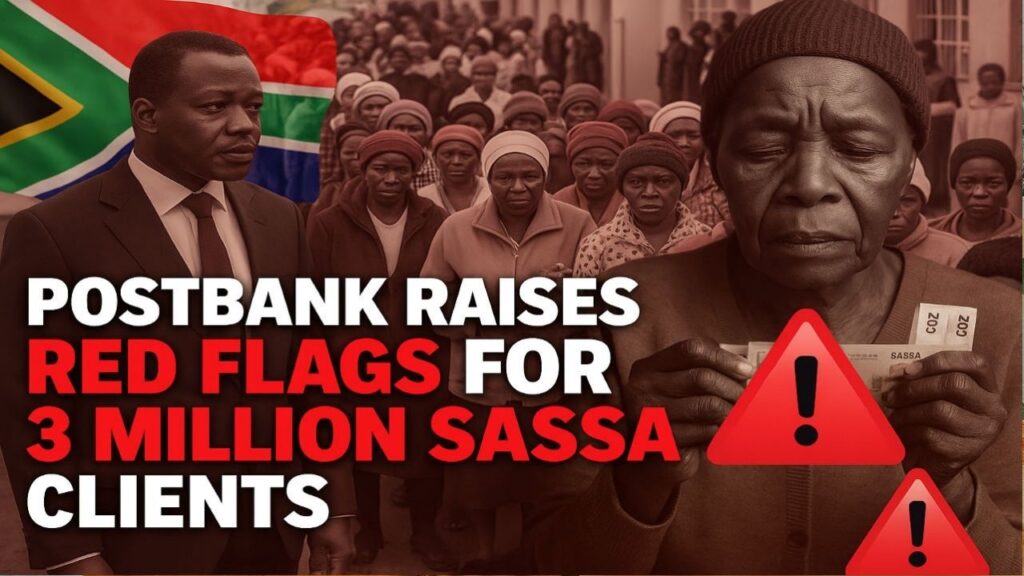The rand October drop to R18.23 per US dollar is more than a market headline it is a shift that can ripple through almost every household budget line in South Africa. When the currency weakens, the cost of anything priced internationally tends to rise in rand terms. That feeds through to fuel, imported food inputs, electronics, mobile network costs, and eventually municipal tariffs and retail prices. This comprehensive guide explains why the rand is under pressure, how the effects spread, what the next few months could look like, and how households and businesses can cushion the blow.
Table of Contents
Rand Weakens to R18.23 Quick Summary

Particulars |
Details |
|---|---|
Headline exchange rate |
Rand weakens to about R18.23/USD in October |
Why it matters |
Higher rand prices on imports raise fuel, food inputs, electronics, and telecoms costs |
Biggest near-term pressure points |
Petrol and diesel, public transport fares, grocery staples, electricity cost pass-throughs, mobile data and devices |
Who could benefit |
Exporters (mining, agriculture, tourism) gain competitiveness in foreign markets |
What to watch next |
International oil prices, global interest rates, domestic power supply, local inflation data |
Practical actions |
Tighten budgets, switch to local substitutes, shift travel patterns, lock in savings, track fuel price releases |
Official site |
South African Reserve Bank: https://www.resbank.co.za |
Why the Rand Is Under Pressure and Why That Hits Your Pocket
Several factors typically push the rand weaker:
- Global interest-rate dynamics
When major central banks keep rates high (or hike), global investors tend to prefer those markets’ assets. That can pull capital away from emerging markets like South Africa, weakening the rand. - Commodity and energy swings
South Africa imports crude oil. A weaker rand means every barrel costs more in local currency, lifting fuel prices and pushing up freight, warehousing, and retail delivery costs. - Domestic growth and power constraints
Load-shedding risks and slower output dent business confidence and productivity, softening the rand’s appeal and raising the cost of finance for local firms. - Risk sentiment and politics
Global risk-off episodes or local policy uncertainty can spark rand volatility. Even if fundamentals are sound, the currency can move sharply on headlines.
Bottom line: a weaker rand raises the local-currency price of imports. Over weeks and months, these higher input costs filter into pump prices, shelf prices, and service tariffs.
What the Slide Means for Wages and Jobs
- Real wages under pressure: If your salary does not rise as fast as prices, your purchasing power falls. That shows up first in essentials: petrol, groceries, transport, data, and electricity.
- Sector split:
- Import-reliant sectors (electronics, pharmaceuticals, clothing retail, some food manufacturing) face margin pressure and may slow hiring or delay raises.
- Export-linked sectors (mining, agriculture, some manufacturing) may benefit from a weaker rand through stronger foreign-currency revenues, improving cash flow and potentially stabilising employment.
- Tourism can get a lift as SA becomes cheaper for foreign visitors, supporting hospitality jobs if travel demand remains healthy.
Petrol and Transport: The Fastest Pass-Through
Fuel is priced off international oil benchmarks plus the rand exchange rate, then adjusted monthly in South Africa. A weaker rand quickly feeds into higher petrol and diesel prices. Knock-on effects include:
- Public transport fares: Operators face higher diesel costs, which can lead to fare increases after a short lag.
- Freight and logistics: Delivery costs rise for retailers and wholesalers, nudging grocery and appliance prices up.
- Airfares: Jet fuel moves with oil and the rand; fares may tick up, especially on domestic routes.
Electricity and Municipal Costs: Slower, but Persistent Pass-Through
Electricity tariffs are regulated and set through formal processes, so they do not spike overnight with the exchange rate. However, a weaker rand can raise the local cost of imported equipment, maintenance parts, and utility fuel inputs. Over time, those pressures can show up in the next tariff cycle or in municipal service charges tied to operating costs. Households will not see an immediate leap due purely to this month’s rand move, but gradual pass-through is common.
Data, Devices, and Digital: The Hidden Rand Channel
- Mobile devices and routers: These are largely imported. A weaker rand means higher rand prices or fewer promotions on handsets and home routers.
- Network equipment: Telecom operators buy a lot of gear in foreign currency. If the rand stays weak, future capex costs rise, potentially nudging data prices higher over time (or slowing network upgrades).
- Streaming and cloud subscriptions: Many are billed in dollars. Expect rand-denominated increases unless providers hedge or delay adjustments.
October–November Outlook: What Could Drive Prices
- International oil prices: If crude rises while the rand stays weak, fuel increases could be larger and stickier.
- Global rate path: Any hawkish surprise abroad can pressure the rand further; a dovish turn can provide relief.
- Domestic supply: Power stability, major wage rounds, or transport disruptions can move inflation expectations and retailer pricing decisions.
Illustrative near-term ranges (for planning purposes, not guarantees):
Category |
Impact of Weaker Rand |
Possible Oct 2025 Change |
|---|---|---|
Fuel prices |
Imported cost pass-through |
+6% to +8% |
Public transport |
Diesel-driven fare adjustments |
About +5% average |
Essential goods |
Imported inputs and logistics |
+4% to +7% |
Salaries (real value) |
Inflation outpaces pay |
−3% to −5% |
Exports |
Price competitiveness improves |
Up to +5% growth potential |
Practical Ways Households Can Cope
- Reshape your commute: Car-pool, combine errands, or shift to off-peak travel. Even a 5–10 percent reduction in fuel use cushions pump price shocks.
- Buy local where possible: Local staples reduce the import-cost component. Compare unit prices and substitute imported brands.
- Stagger big purchases: Delay discretionary imported items (electronics, appliances) or watch for retailer hedged promotions.
- Energy efficiency at home: Small shifts LED bulbs, shorter geyser cycles, fixing draughts trim bills without upfront splurges.
- Data discipline: Use Wi-Fi over mobile data at home, schedule updates off-peak, and monitor streaming quality settings.
- Budget with buffers: Build a modest contingency line for petrol and groceries. Review debit orders and renegotiate where you can.
- Protect income: If your sector is sensitive to imports, strengthen your profile with short courses or pivot to roles with export or tourism linkages.
What Employers and SMEs Can Do
- Fuel and freight optimisation: Consolidate deliveries, renegotiate with logistics partners, and re-route to reduce diesel exposure.
- Local sourcing: Shorten supply chains where feasible; explore SA-made inputs.
- Cash-flow hedges: Consider simple currency risk policies for near-term imports.
- Staff support: Transport allowances, staggered shifts, and remote work days can soften employees’ cost spikes.
Frequently Asked Questions
Q1: Why did the rand fall to R18.23 in October?
A combination of global risk sentiment, high offshore interest rates, domestic growth constraints, and energy-related uncertainties typically weigh on the rand.
Q2: How does this affect my salary?
If prices rise faster than your pay adjustment, your real purchasing power shrinks. Fuel, groceries, and data costs tend to show changes first.
Q3: Will fuel prices rise again before month-end?
Fuel prices are reviewed monthly. A weaker rand and higher oil price usually imply higher pump prices in the next adjustment.
Q4: Can electricity jump immediately due to the rand?
Not immediately. Tariffs follow regulatory timetables, but a persistently weak rand can raise input costs that influence future tariff settings.
Q5: Why are mobile phones and laptops pricier so quickly?
They are mostly imported and priced in foreign currency. Retailers adjust rand prices as exchange rate costs move or pull back on promotions.
Q6: Who benefits from a weaker rand?
Exporters and tourism operators may see revenue tailwinds, which can stabilise jobs in those sectors.
Q7: What can I do right now to prepare?
Tighten your monthly budget, prioritise essentials, reduce fuel usage, link to local brands where possible, and build a small buffer for volatile items.
For More Information Click HERE










